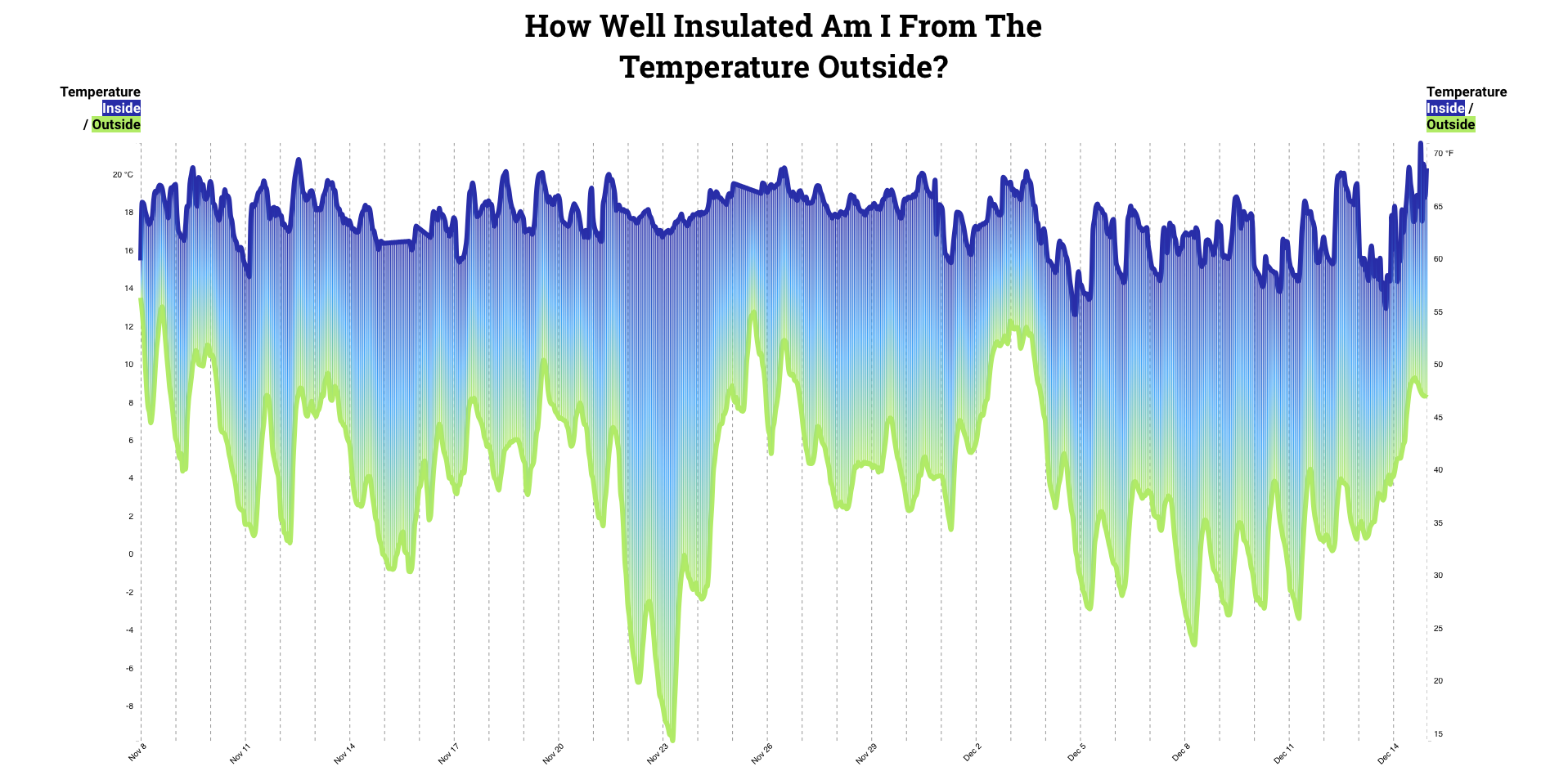Real-Time Temperature Sensor
This visualization compares the fluctuation of temperature inside my windowsill in Brooklyn with the temperature outside.
Process
Audience: Parsons Data Structures Course
Data Source: Inside temperature from a real-time temperature sensor connected to a Particle breadboard, from which I collect temperature readings every 30 seconds. Outside temperature from Dark Sky API, from which I collect hourly and daily weather data at the end of each day. Both data sources are stored in an AWS RDS database
Tools: AWS EC2 / AWS RDS / CSS / d3 / Express / Handlebars / Heroku / HTML / JavaScript / Node / PM2 / PostgreSQL
Data
Inside Temperature
After setting up the latest reading coming from my temperature sensor to be accessible through the Particle Cloud API, I established an ongoing process in PM2 and AWS EC2 to execute a node script that pulled down these temperature values into an AWS PostgreSQL database every 30 seconds. Since this temperature sensor was a bit finnicky, I then averaged these values per hour to get representative averages for use in the front-end interface.
For hours with data gaps — either due to missing (due to Particle outages or process issues) or unreliable data (when my sensor started giving me particularly buggy results) — I estimated temperature readings by linearly progressing values between the two last reliable data points on either side of the outage:

Outside Temperature
Using the Heroku Scheduler tool, I executed a node script that connects to Dark Sky's Time Machine API and writes hourly and daily weather data to AWS PostgreSQL tables at the end of each day (at 12:30 AM). This data pull includes a multitude of helpful data points on the day's weather, including the hourly temperature readings used in my front-end visualization.
I collected both inside and outside temperature for almost two months — from November 8th to December 31st, 2018.
Visualization

My visualization implements a difference chart, which fills in the space between lines to highlight a greater-than and less-than differences over time.

I also include a responsive hover-over user interaction that provides details on the specific inside temperature (with a designation for estimated temperatures), outside temperature, and difference between the two at any point in the timeframe visualized.







